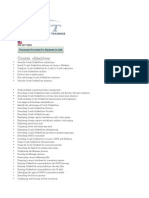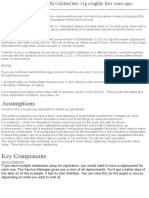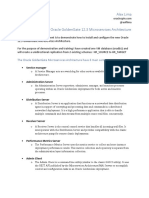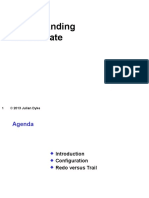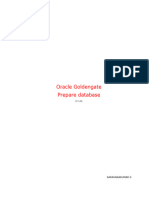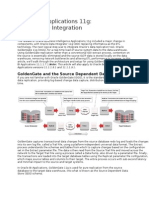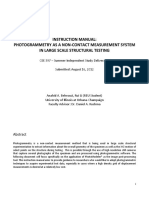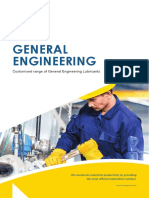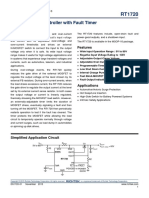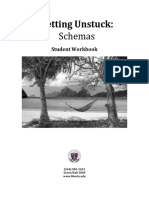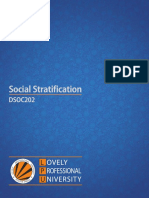0% found this document useful (0 votes)
94 views5 pagesCourse Topics
This training focuses on Oracle-to-Oracle database replication using Oracle GoldenGate 12c. It covers both the classic and microservices architectures. Students will learn how to install, configure, and manage replication environments using both architectures. Hands-on practice includes implementing end-to-end replication environments to verify replication is occurring. The course also highlights new features in Oracle GoldenGate 12c such as the microservices architecture and parallel replication.
Uploaded by
Khan BahiCopyright
© © All Rights Reserved
We take content rights seriously. If you suspect this is your content, claim it here.
Available Formats
Download as DOCX, PDF, TXT or read online on Scribd
0% found this document useful (0 votes)
94 views5 pagesCourse Topics
This training focuses on Oracle-to-Oracle database replication using Oracle GoldenGate 12c. It covers both the classic and microservices architectures. Students will learn how to install, configure, and manage replication environments using both architectures. Hands-on practice includes implementing end-to-end replication environments to verify replication is occurring. The course also highlights new features in Oracle GoldenGate 12c such as the microservices architecture and parallel replication.
Uploaded by
Khan BahiCopyright
© © All Rights Reserved
We take content rights seriously. If you suspect this is your content, claim it here.
Available Formats
Download as DOCX, PDF, TXT or read online on Scribd
/ 5
